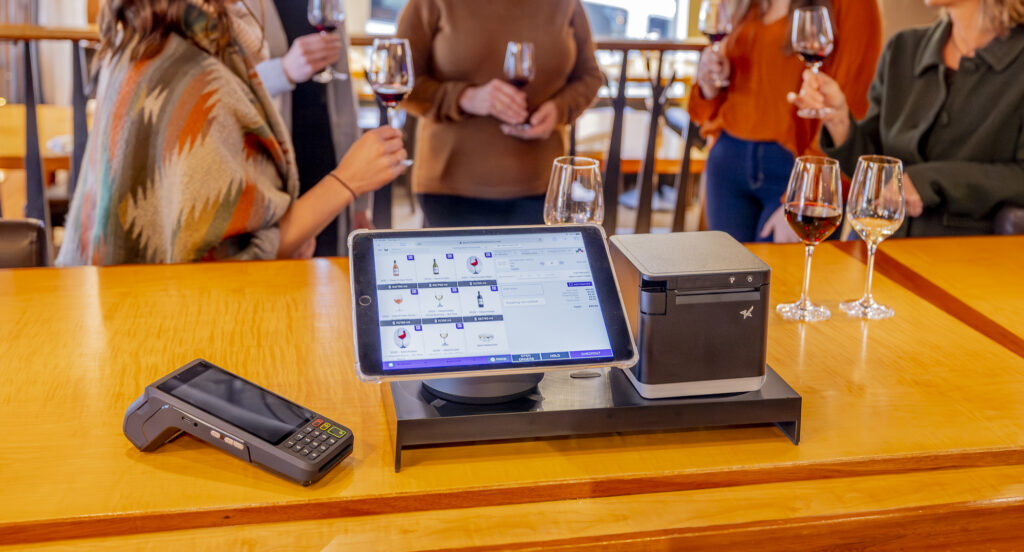Unlock Your Winery’s Potential: Check Out Our Ultimate Guide to Choosing the Right DTC Software
Choosing your winery’s DTC software platform is a significant decision for the growth and wellbeing of your business. The right system for your winery relies on various factors as part of your consideration. In this article, we provide key aspects to keep in mind when you explore your winery DTC software options.
Ultimately, a critical step in the process is to attend a demo of the platforms you’re considering, to see the real-time use and gauge what works best for your winery team. This also enables you to gain a better understanding of everything each platform offers. The complexities and variations between software platforms align with the fact there is rarely a “one size fits all” solution. Before considering a transition to any new platform, you should do a demo of the platforms, even multiple times with key stakeholders from your company to ensure all important questions are considered.
-
-
1. Well thought-out features and functions
-
The platform functionality must be thorough yet simple, and structured in a way that is applicable to the broad swatch of typical winery operations. In addition, it must provide flexibility for winery-specific customization, as no two wineries operate exactly the same. These well thought-out features and functions necessitate demos to truly be aware of all that it can do.
-
-
2. Company responsiveness to feature requests
-
As the wine industry continues to evolve, so too should the tools and platforms that support it. The software company’s openness to a continual feedback loop from wineries, and subsequent prioritization of rolling out new features, ensures these tools are in lockstep with the changing wine industry.
-
-
3. Frequency of adding new or improved features and functionality
-
Follow-through is key! The promise of new features is different than actually rolling out new features. Ensure the company you decide to work with has a track record of delivering promised features on a reasonable timeframe. Furthermore, recognize the advantage of rolling out features in frequent, smaller “batches” rather than all at once: this is an important strategy for software development to ensure new features are functioning properly. Multiple updates monthly are generally more advantageous than major updates once a year, as they cause less disruption to your business and ensure easier identification of potential bugs requiring fixing (a normal aspect of software development). Also, ensure the company clearly communicates the implementation of new or improved features, and provides support or even training for your team on how to take advantage of exciting new features.
-
-
4. What level of Customer Support do they offer?
-
Every day operations sometimes require customer support and often there can be a learning curve for staff. With wineries often operating 7 days of the week, what level of customer support does the software company provide to your business? While we’d like to think all problems arise at a convenient time, we know that’s rarely the case. What if you encounter a question during your winery tasting room on a busy summer Saturday, or during a club event after typical business hours? Make sure you work with a company who offers customer support when you need it most. Ideally, you can access real people via reachable methods like phone and/or email, not just “logging a ticket” where an answer may take days, weeks, or sometimes – never. The reassurance of live customer support is priceless.
-
-
5. What is the onboarding process?
-
Getting up and running on a new platform is a matter of balancing your existing operations, your new platform, and ensuring an efficient but adequate timeline for your business to go live. Will you have to do the “heavy lifting” to migrate your winery’s data, or will the company do it for you (with your participation)? Is the migration process handled internally, or will you need to work with – and potentially pay – a third party to do this work for you? Who are the key contacts at the company who will be managing the data migration and onboarding process? Will your website build or ecommerce page matching be handled internally, or will you be bringing on your web designer of choice? Will they provide training and is there an option for in-person support at your tasting room for Go-Live? Asking these questions upfront will help you ensure everyone’s expectations are managed and the transition is as painless as possible.
-
-
6. What is the actual cost of the platform?
-
It’s important to look at the big picture when assessing costs related to new winery software. Quantify not just the short-term migration and onboarding costs, but also the long-term, monthly costs. Some offer reduced or free onboarding costs, while others levy a fee to transfer. While saving $1,000 upfront to switch to a platform may be appealing, look at your costs across 6,12, 24+ months to determine a true apples-to-apples cost comparison. In addition, will the software you choose require additional add-on fees for critical integrations you need to operate your business? These are all important considerations as you weigh costs with benefits. And pay close attention to the costs of the payment processing associated with your platform: are those fees fair or terribly high and how often do they raise their rates? Their goal should be to not only improve your software but deliver a savings that helps you cover the cost of transition.
-
-
7. Do they require a contract?
-
Migrating your winery to a new point of sale system takes effort and time. It’s not a task you want to undertake every couple years. However, only once you’re operating your winery on a new system will you truly be able to experience and evaluate if it is the right platform for your business. Does the software company provide any flexibility or a “grace period” before they start charging your winery for use of their tools? Do any free onboarding or transfer promotions incur a payback penalty if you decide to switch from their platform in a certain timeframe? Will you be locked into a contract that limits your freedom to switch platforms on your terms? These are important questions to consider for the health and efficiency of your business.
-
-
8. What is their history of price increases?
-
We all know the strategy: entice new customers, then increase rates without warning. Does the company have a reputation for stable pricing, or do they frequently increase their prices? Be sure to investigate all areas where costs are levied: software purchase fees, credit card processing fees, and costs related to 3rd party integrations.
-
-
9. Who owns the platform? How does their business reinvest profits?
-
Who is the ultimate owner of the platform? Are they independent with the best interests of their winery customers in mind or are they owned by a larger investment group? Furthermore, are profits distributed or reinvested back into the platform? You want to ensure the hard-earned money that you spend towards the platform does help the company have staying power, and continuously improve their platform so you can consistently utilize new features and functionality to grow your business. Lastly, is it important to you to support businesses staffed with wine industry professionals?
-
-
10. Are the payment processing rates competitive?
-
Are you stuck with payment processing options that charge inflated rates and force you to call numerous parties that don’t communicate information well? Do they point the finger at each other when you need credit card processing help and there is a problem? Do they provide the kind of tools wineries need like automatic card updater and token transfer? Do you know how to understand all of the costs on your statement and know which ones are artificial costs invented to add additional revenue by without sending rate increase notices? What is their history of raising rates? Can they offer savings over other competitors?
In conclusion, there are many things to take into consideration when choosing your winery DTC software. it cannot be understated: do a demo of every platform you’re considering before making the switch. A true DTC platform should be so robust, it might be hard to see it all in just one demo – so be wary if you feel rushed, and don’t be afraid to ask for additional demos. Come with questions, and make sure key members and “super-users” on your team are a part of the process.
Ready to see how Bottle360 can help you sell more wine while making your life easier? Schedule a Bottle360 demo today.



